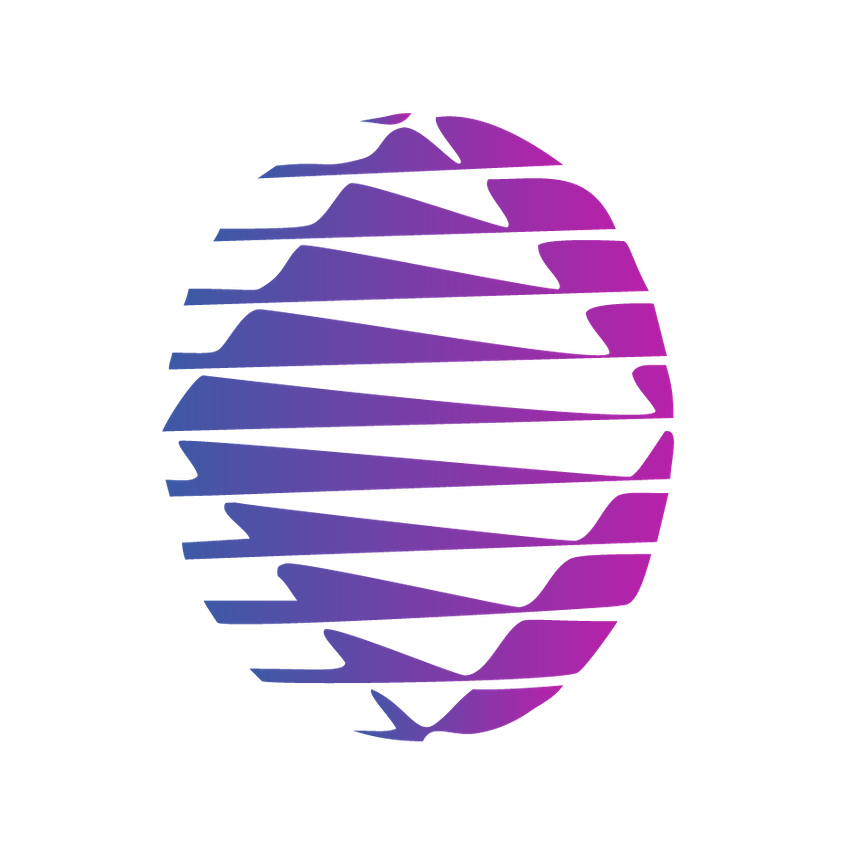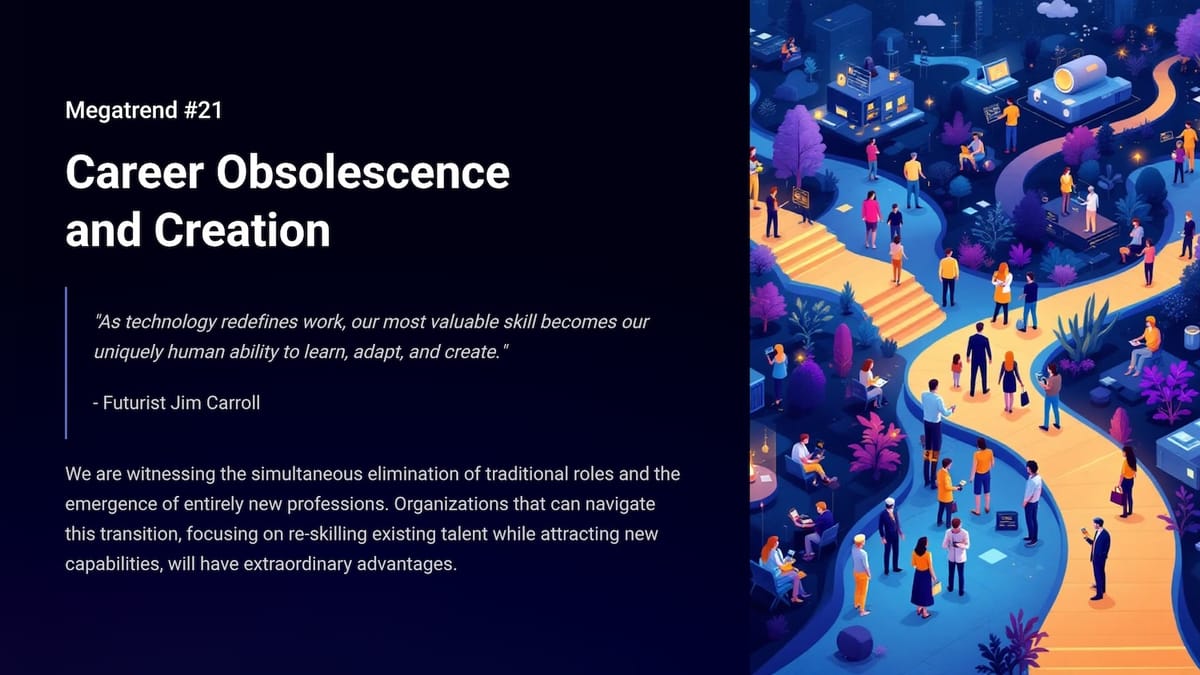"As technology redefines work, our most valuable skill becomes our uniquely human ability to learn, adapt, and create."- Futurist Jim Carroll
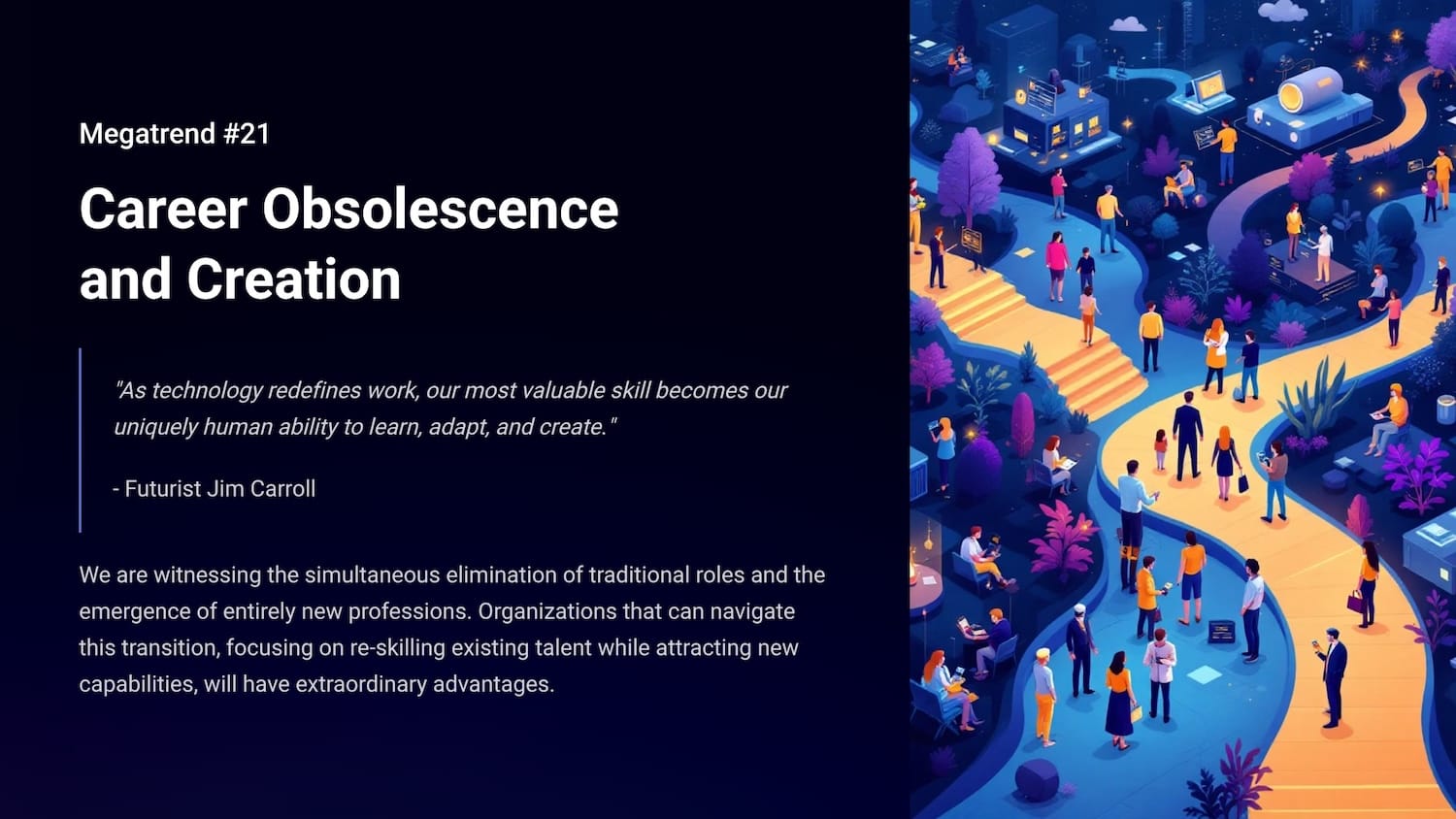
(Futurist Jim Carroll is writing a series on 30 Megatrends, which he first outlined in his book Dancing in the Rain: How Bold Leaders Grow Stronger in Stormy Times. The trends were shared in the book as a way of demonstrating that, despite any period of economic volatility, there is always long-term opportunity to be found. The book is now in print - learn more at dancing.jimcarroll.com)
We are witnessing the simultaneous elimination of traditional roles and the emergence of entirely new professions. Organizations that can navigate this transition, focusing on re-skilling existing talent while attracting new capabilities, will have extraordinary advantages. The trend is being accelerated to a ridiculous speed as the impact of AI takes hold.
It's "The Great Rebalancing" of the global workforce, and here's the full PDF report.

We all know that jobs and careers are changing, but do we know how much? And how fast?
Hint: It's bigger than you think, and will happen faster than you are prepared for. There is no doubt that the global labor market is entering a period of profound transformation, characterized by the simultaneous obsolescence of established professions and the genesis of entirely new ones. This is not a cyclical adjustment but a structural rebalancing driven by powerful, interconnected macrotrends. Organizations and individuals that successfully navigate this transition will secure an extraordinary competitive advantage, while those that fail to adapt risk significant disruption.
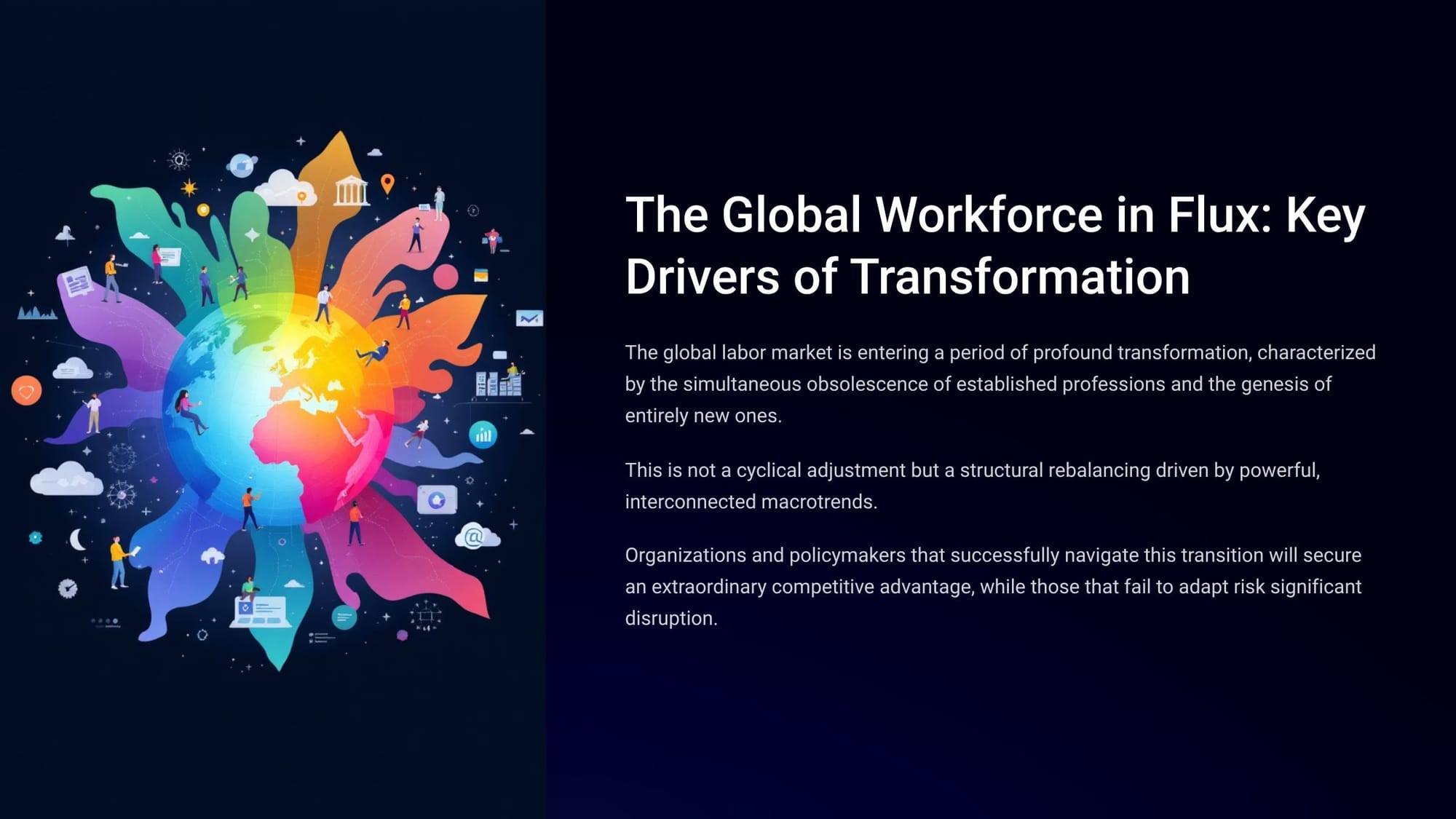
We've all become familiar with this trend, but suddenly, with the arrival and acceleration of AI, the speed of the change is now picking up the pace. What we thought might have been decades away - the disappearance of many careers and the rapid emergence of new careers - will now take years rather than decades. What's happening is this: there are now several simultaneous, accelerating trends at work involving demographics and technology:
- a demographic crisis in developed nations (a shrinking workforce)
- this creates a powerful incentive for technological adoption
- labor shortages are counteracted by AI productivity gains
- resulting in a desire or need to accelerate AI adoption to maintain economic viability
- which fundamentally challenges society to reskill the human workforce to effectively collaborate with machines!
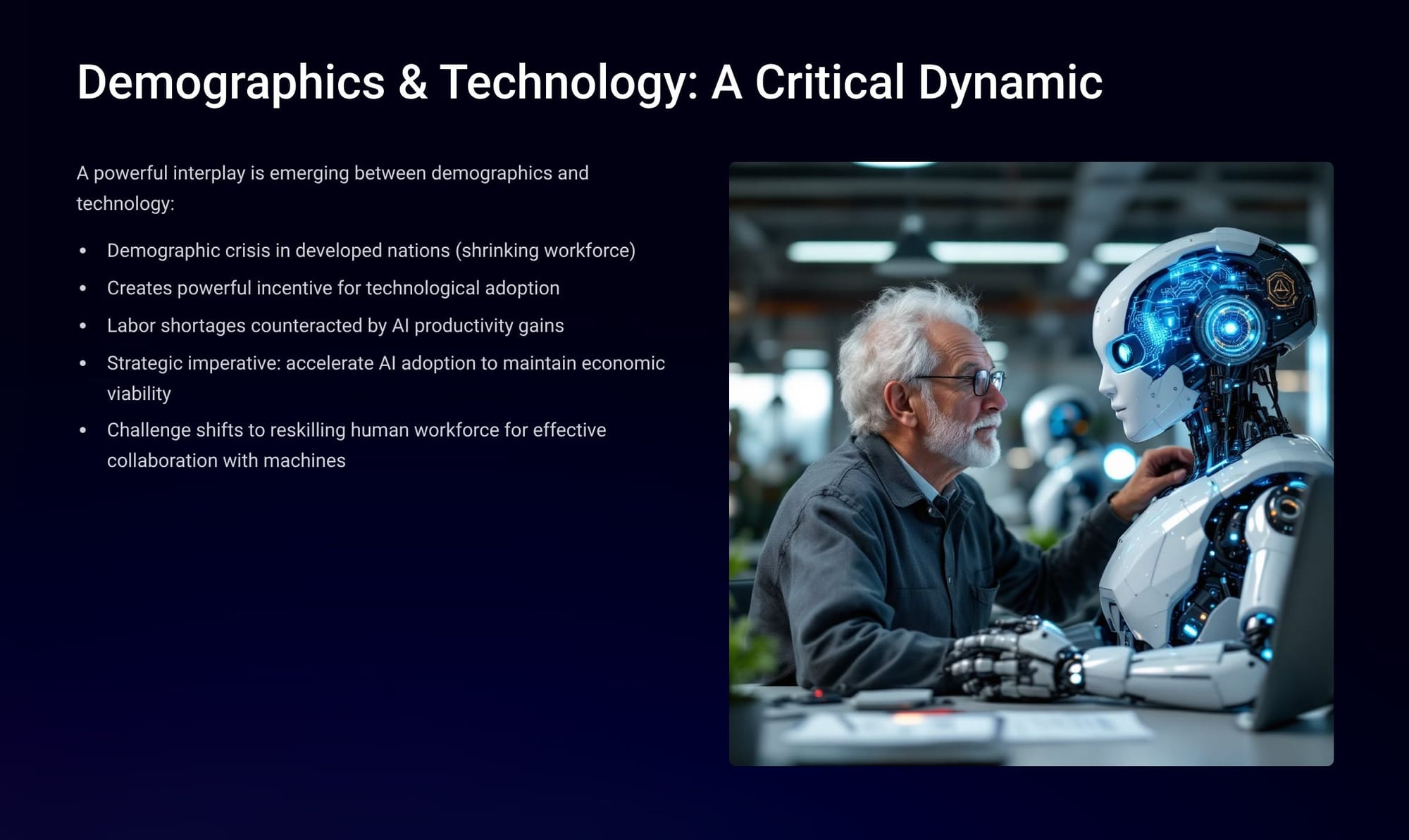
We are in the early stages of this trend yet, but can see three distinct phases that will unfold:
Automation.
- An initial wave focused on automating routine, predictable tasks
- Model of substitution: machine labor replacing human labor
- Primarily targeted at clerical and manual labor
Augmentation
- Current phase, supercharged by generative AI
- AI as a collaborative tool enhancing human capabilities
- Affecting high-skilled, white-collar professions
Autonomy (Agentic AI)
- Next frontier (2025-2035)
- Autonomous AI systems capable of reasoning, planning, and executing complex workflows
- Rise of “digital labor” expanding organizational capacity

How big a trend is this? Let's quantify the crunch. There are a tremendous number of studies and reports, but one rough estimate suggests that between 2025 and 2030, we will see:
- 170 million new jobs created globally
- 92 million existing roles displaced
- That's a net increase of 78 million jobs (a 7% expansion)
- This "labor-market churn" equals 22% of today's employment
This means that early 1 in 4 existing jobs will be part of this massive rebalancing!

When we speak of this trend, we speak of sunset jobs and sunrise jobs. The meaning of each should be pretty clear.
Sunset roles? These are professions in structural decline, those that are characterized by routine, repetitive, and rule-based tasks. Consider them gone:
- Data Entry Clerks
- Administrative and Executive Secretaries
- Accounting, Bookkeeping, and Payroll Clerks
- Bank Tellers
- Postal Service Clerks
- Customer Service Representatives
- Receptionists

Sunrise professions? These are technology-driven roles
- AI and Machine Learning Specialists: Building and optimizing AI systems and algorithms
- Big Data Specialists: Analyzing and interpreting complex data sets
- Fintech Engineers: Developing financial technology solutions
- Business Intelligence Analysts: Transforming data into actionable business insights
- Information Security Analysts: Protecting digital assets and systems
- Software and Application Developers: Creating and maintaining digital products
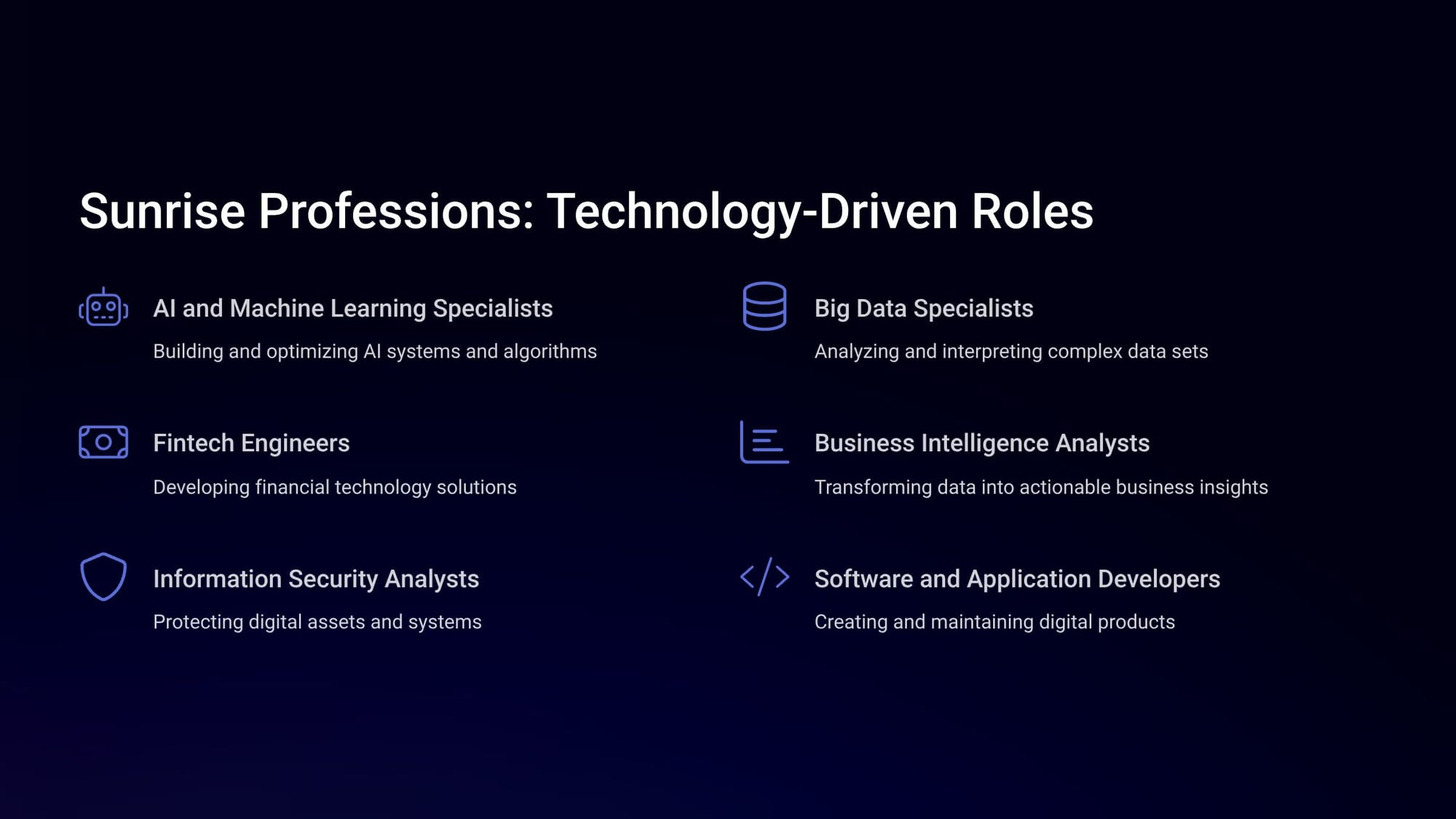
In addition, we are seeing the emergence of new "sunrise professions" - for example, those involved in the transition to the green economy. (Yes, it is still happening. And yes, the momentum has shifted to the rest of the world as the US goes into decline.) This includes such things as:
- Renewable Energy Engineers
- Solar Energy Installation and System Engineers
- Sustainability Specialists
- The transition to a low-carbon economy requires a new workforce skilled in green technologies, environmental management, and sustainable practices.
Projections suggest the creation of 34 million additional jobs in agriculture alone by 2030 due to green initiatives!
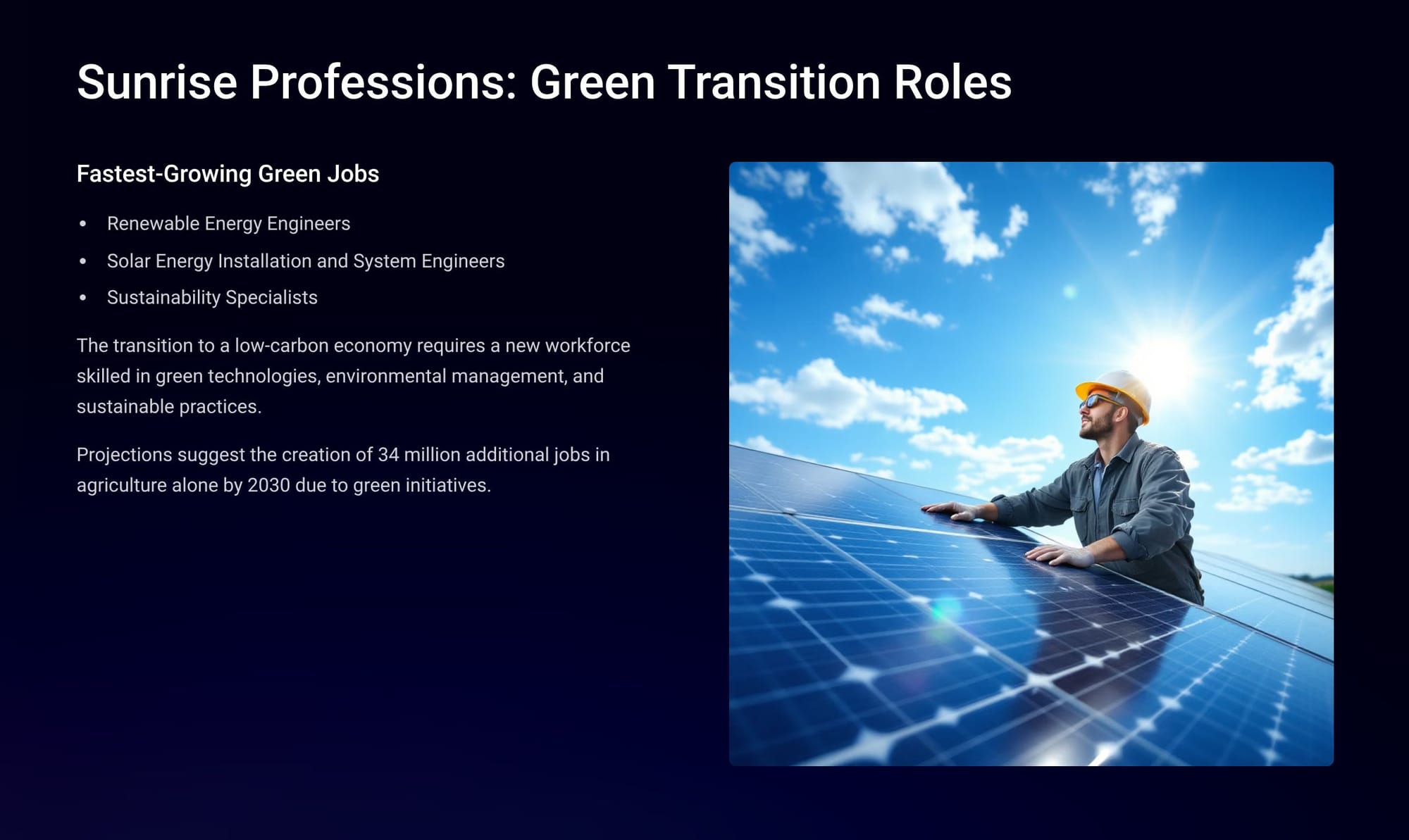
Oh, and then there are those professions and people who are just safe. Their jobs will change with new knowledge, but their jobs will still exist. Who are they? Honorable careers and professions such as plumbers, electricians...!
So, how do companies, people, and society deal with all of this? Knowledge, training, learning! The simple fact is that the value of what a worker knows is decaying at an unprecedented rate, making the ability to learn, unlearn, and relearn the most critical meta-skill for sustained employability.
Employers estimate that 39% of a worker's core skills will be disrupted between 2025 and 2030. 63% of employers identify the "skills gap" as the single biggest barrier to their organization's transformation.

That said, there are key things that humans can do that machines will never do, including:
- Cognitive Skills
- Analytical thinking
- Creative thinking
- Complex problem-solving
- Self-Efficacy Skills
- Resilience, flexibility, and agility
- Curiosity and lifelong learning
- Adaptability to change
- Social Skills
- Leadership and social influence
- Empathy and active listening
- Collaboration and teamwork
People who focus on developing and enhancing these soft skills in the face of unrelenting technological change will be better positioned than those who do not.
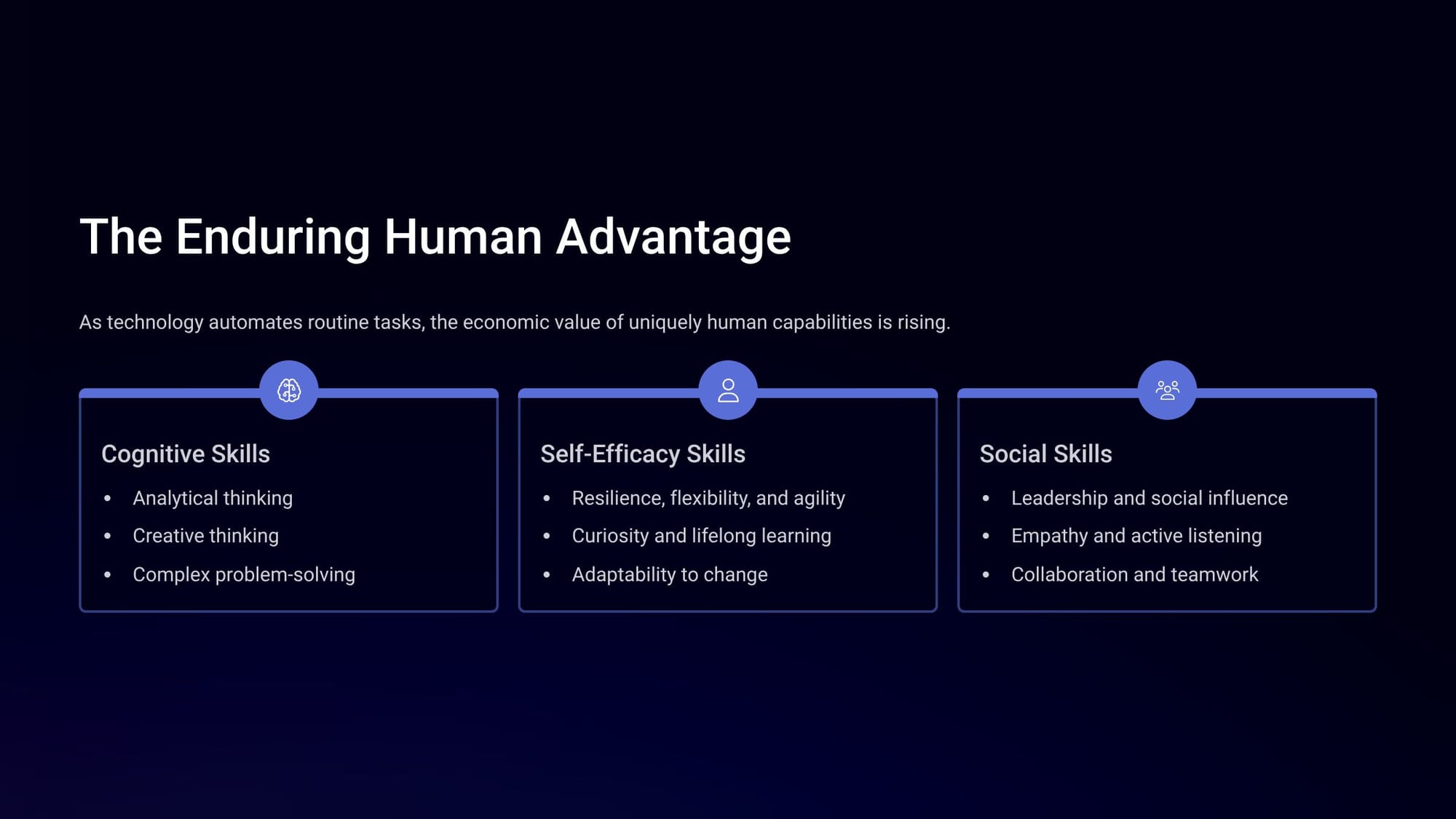
Even so, we'll all have to master the integration of technical skills and human skills, because that is where the most value will be created. In that context, AI is not just a subject to be learned; it is a tool that amplifies core human competencies:
- A data analyst uses AI to enhance analytical thinking
- A marketing professional uses generative AI to augment creativity
- A manager uses AI to improve decision-making
The most valuable employee will be the one who not only masters the soft skills, but those who can effectively operate at this human-machine interface level!
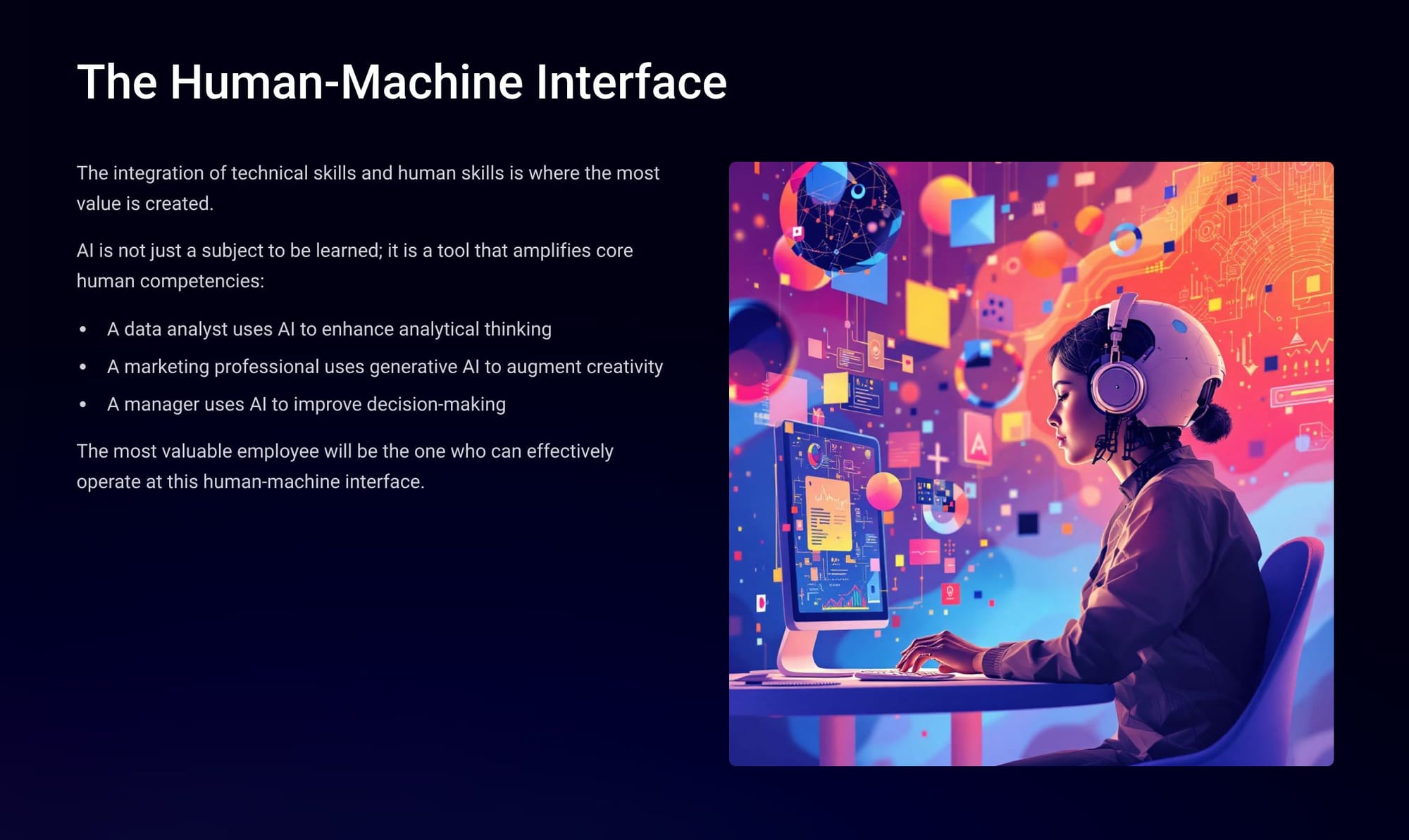
All of this is already unfolding, and will only begin to accelerate from here:
Phase 1: 2025-2028 - The Great Reskilling & Early Adoption
- GenAI becomes a standard tool for knowledge workers
- First “stumbling” AI agents emerge
- Peak of labor market churn and skill disruption
- Massive investments in reskilling programs
Phase 2: 2029-2032 - The Rise of the Augmented Workforce
- AI agents evolve into reliable “digital colleagues”
- Human-agent teams become a practical reality
- New specialized roles emerge (AI Trainers, Human-Machine Teaming Managers)
- Focus shifts to optimizing ‘human-agent ratio’
Phase 3: 2033-2035 - Towards Widespread Autonomy
- Autonomous multi-agent systems become viable
- “Smart Machines” are deeply integrated into the workplace
- Human roles elevated to strategic direction and ethical oversight
- Concept of a “job” fundamentally transformed
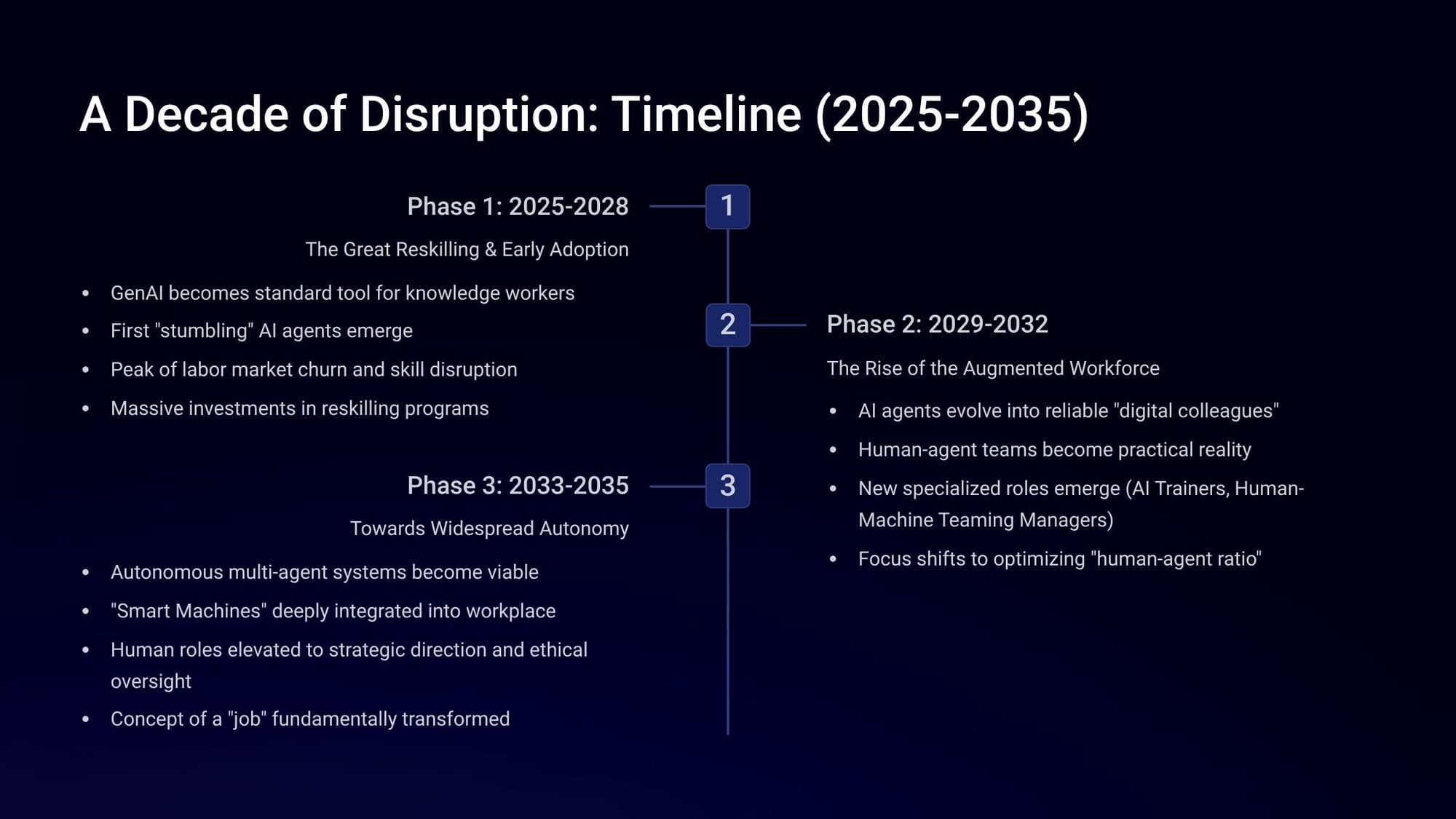
So what do you do?
Buckle up! Get involved! Keep learning!
Futurist Jim Carrol predicted most of these trends in his 1997 book Surviving the Information Age.
